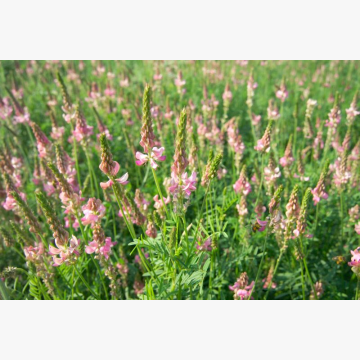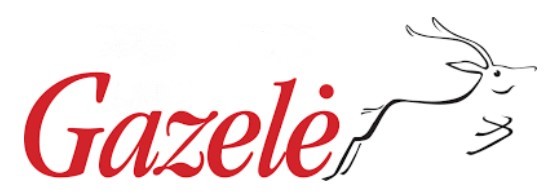- Home
- Seeds
- Catch/Cover crops
- Plants for catch/cover crops
- Sainfoin ZEUS
Category: Catch/Cover crops
FOR CONSULTATIONS APPLY TO:
Commercial director
Lina Smalskienė
tel. +370 618 02 551
e-mail linak@agrolitpa.lt
Sales manager
Tautvydas Kliučininkas
tel. +370 681 35 093
e-mail tautvydask@agrolitpa.lt
Sales manager
Eglė Petkevičienė
tel. +370 626 95 458
e-mail eglep@agrolitpa.lt
Sales manager
Kotryna Nakrošytė
tel.: +370 601 39 282
e-mail kotryna@agrolitpa.lt
Products
Onobrychis viciifolia Scop.
A perennial forage grass for fodder with excellent quality green and dry mass
- Fast growth renewal
- 2-3 cuts per year
- Hay is easy to digest and very high in proteins
- Good frost and drought tolerance
- Adaptable to different types of soils, even dry and poor ones
- An excellent substitute to alfalfa in hills, foothills
- It is generally cultivated alone, but sometimes it can be associated with other varieties, such as alfalfa
- Fast growth and rapid regrowth
- It is possible to cut 2-3 times a year
- Fodder is rich in proteins, vitamins and other valuable nutritional components
- The fodder is of particularly good quality in the second and third years of cultivation
- Average hay yield – up to 8 t/ha
- The seed yield from the second cutting can reach 800-1200-1500 kg/ha
- 1000 seed weight – 20.0-22.0 g
- Dry matter yield potential – 14 t/ha
- Typical silage analysis results: DM – 14 %, crude protein – 18 %, digestibility (D-value) – 62, energy value (ME) – 9.5 MJ
- Grows well in calcareous, not necessarily fertile soils, as well as in sandy or gravelly areas
- It also grows in clay soils, but does not tolerate waterlogging
- Good drought tolerance
- Winters well
- Can be grown alone or mixed with other crops such as alfalfa
- Excellent as a substitute for alfalfa in hilly areas
- Especially recommended as dietary feed in the form of green mass for young cattle, especially ruminants
- Unlike red clover, when used even in the early stages of development, even a moist mass of sainfoin does not cause bloating in ruminants
- Improves the taste of cow's milk and butter
- Can be used in pig feed as a more digestible component
- Seeds, as a protein-rich component, are often used in horse feed instead of oats
- For animals, it is a natural anthelmintic mean
- Nectareous plants, good pre-crop
- Restores soil fertility during cultivation for 2-3 years
- Thanks to a well-developed root system, it perfectly stops soil erosion, can be used to reinforce slopes and embankments
The varietal parameters may differ from those indicated here when the testing circumstances differ from quondam
Recommended sowing rate: 60-80 kg/ha
Recommended sowing rate when growing for green manure: 70-90 kg/ha
UAB „Agrolitpa“
Keravos sreet. 17, Kerava,
LT-38 131 Panevėžys district, LITHUANIA
Enterprise's code 168598128
VAT code LT685981219
Tel. +370 615 11 315
E. mail info@agrolitpa.lt
Keravos sreet. 17, Kerava,
LT-38 131 Panevėžys district, LITHUANIA
Enterprise's code 168598128
VAT code LT685981219
Tel. +370 615 11 315
E. mail info@agrolitpa.lt




.JPG)


